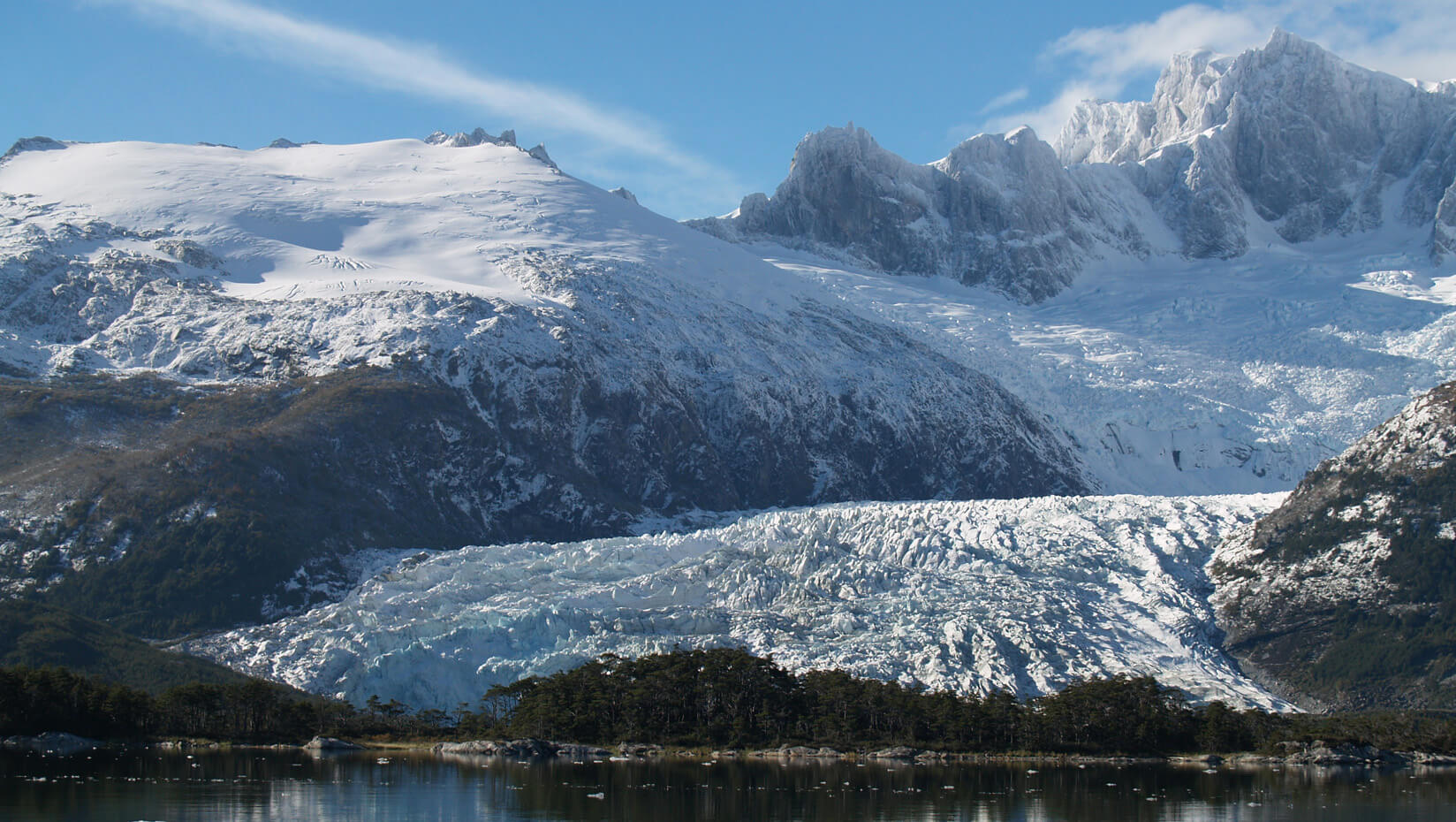
Glacial termination in South America the focus of UMaine-led NSF study
The history of South America’s retreating glaciers at the end of the last ice age will be the focus of a three-year National Science Foundation study led by the University of Maine.
Brenda Hall, UMaine professor of glacial geology in the School of Earth and Climate Sciences and the Climate Change Institute, will lead the team of scientists and student researchers. Their work, funded by a more than $510,000 NSF grant, will help clarify the timing of the last ice age termination in the Southern Hemisphere and the forces behind it by studying the glaciers in the Cordillera Darwin. The icefield is located in the southern tip of South America.
Delving deeper into the last ice age termination, the largest natural warming event in recent geological history, could provide more context for understanding rising global temperatures today and improve future climate predictions.
Research team members include UMaine professor George Denton and assistant professor Aaron Putnam, both with the School of Earth and Climate Sciences and the Climate Change Institute; associate professor Joellen Russell, an Earth-system modeller from the University of Arizona, and professor Patricio Moreno, a paleoecologist from the University of Chile. UMaine students and a student from the Medill School of Journalism at Northwestern University will also join the field team.
Little glacial geologic data has been gathered for areas like the Cordillera Darwin in the margin of the Southern Ocean, yet it can prove essential for learning how past ice ages ended, says Hall.
“The termination of the last ice age represents the largest warming of the past 100,000 years. Understanding this event has implications for determining the most important factors that control large-scale changes in Earth’s climate. Since glaciers respond to summer temperatures, we can use past glacier variations in Cordillera Darwin to track temperature change through the termination,” she says.
The research team will document the timeframe and magnitude of glacier recession in the Cordillera Darwin icefield during the ice-age termination using radiocarbon and exposure dating of glacial landforms and glaciological modeling. The data will be used to evaluate leading hypotheses for what caused ice age termination in the Southern Hemisphere, which include an ocean bipolar seesaw upwelling warm water, the Southern Hemisphere westerlies shifting, or a release of carbon dioxide into the atmosphere.
Researchers will determine how influential the ocean bipolar seesaw, shift of the Southern Hemisphere westerlies and carbon dioxide outgassing were on glacial termination in the region using their glacier record for the Darwin icefield and a general circulation model run by Russell.
UMaine researchers speculate that temperatures rose earlier and faster in the Southern Hemisphere during the last ice age termination than previously expected, based on prior studies. If additional research supports this finding, it may require scientists to reexamine their understanding of the event and their hypotheses for what fueled it.
Contact: Marcus Wolf, marcus.wolf@maine.edu
